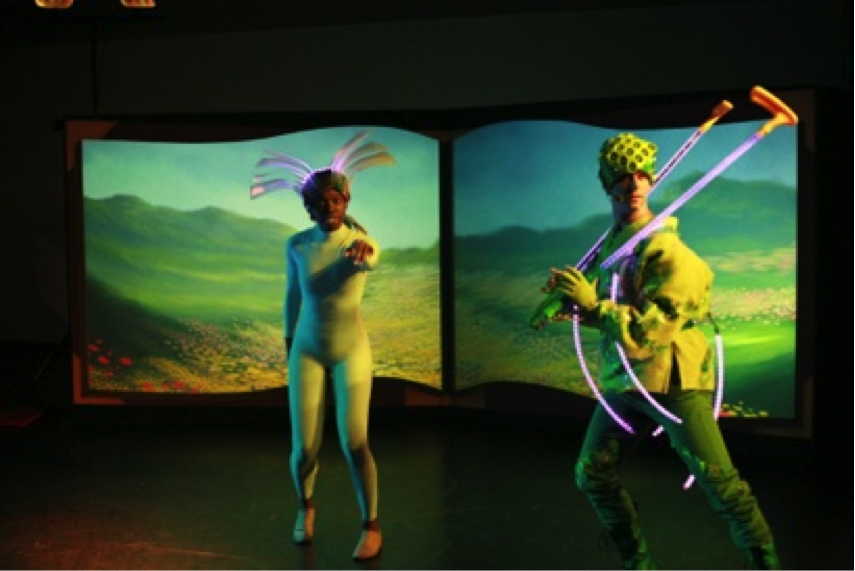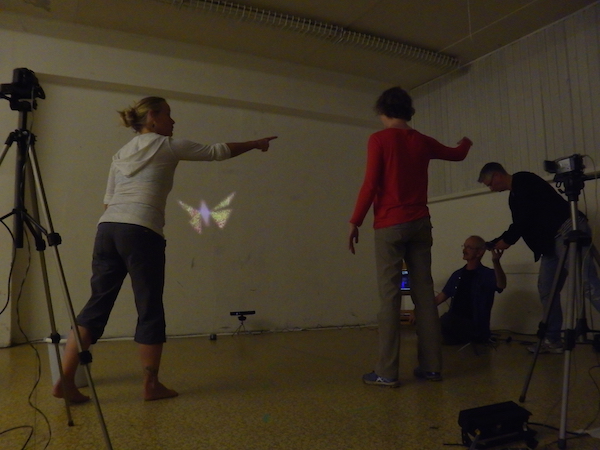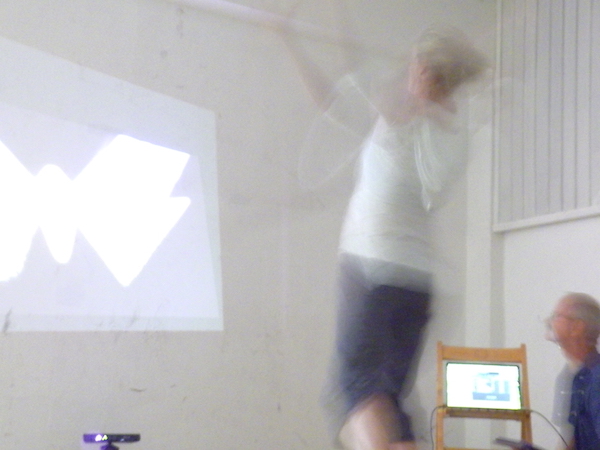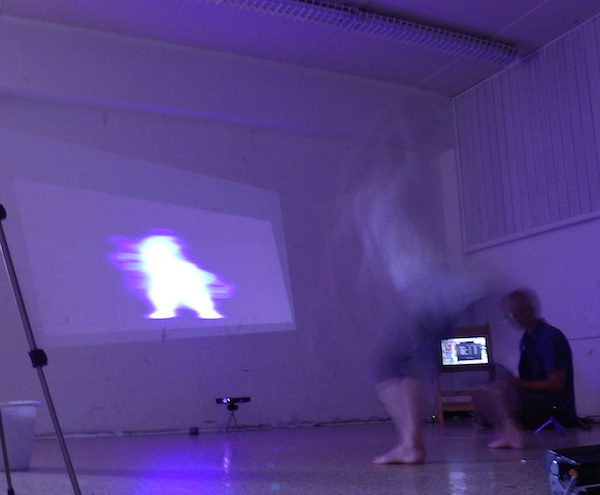Spotlight on Faculty: Gwenyth Dobie
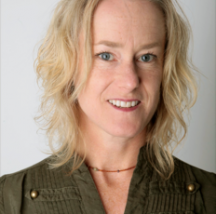
What is the “Butterfly: a study interactive”?
Gwenyth: For the past few months, I have been collaborating with my creative partner William Mackwood on an interactive study that further investigates the relationship between the live performer and interactive design.
During the creation process of our production Bugzzz~ a cautionary tale, we dove deeply into the world of interactive technologies and aimed to create a creation/production methodology that respected the needs of both the live and digital artist. There were many moments of magic; when we transported the audience into the world of the bugs and the sound, music, characters and story sustained a powerful hold on the audience.
Matthew Romantini and Neema Bickersteth in Bugzzz~ a cautionary tale by Out of the Box Productions
However, for me it felt that at times the strength and power of the live performers seemed shackled by the physical limitations, extensive programming demands and hair-pulling inconsistency of the digital technology.
As a result, a critical research question emerged from the Bugzzz project: Can we build a technical interface and process, that would allow the performer to extend their physical and sonic presence and allow for easy accessibly and a smooth live/digital interaction.
Thus Butterfly- a study interactive began. For our sabbatical year, we have assembled a “show in a bag” so we can easily travel around the world to test our ideas on different audiences, and converse with other digital artists who are investigating interactivity in live performance.
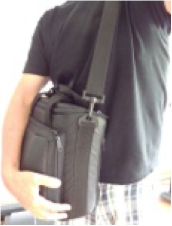
But, most importantly we are travelling with William Mackwood’s brain, my incessant demands and our combined creative talents and energy.
We first presented Butterfly in Berlin in association with the Digital Dramaturgy Lab, at the Summer’s End Festival at the Theatrehaus Berlin Mitte. Then we took what we learned, continued our investigations and presented again in Montaigut le Blanc, France. We have a short Youtube video of that presentation. Here is the link if you are curious. https://www.youtube.com/watch?v=t0rNFi05KsI
We’ve continued to work in preparation for the Conference in Carrara, Italy on the 18th of December at the International Conference “Theatre Between Tradition and Contemporaneity”
What inspired you to combine performance with technology?
Gwenyth: Susan Broadhurst wrote in her article “Intelligence, Interaction, Reaction, and Performance”
I believe that new liminal spaces exist where there is a potential for a diverse creativity and experimentation. These spaces are located on the ‘threshold’ of the physical and virtual, and as a result tensions exist. Since no body, not even a naked body, escapes representation altogether (Broadhurst, 1999: 103), the virtual body (as any other body) inscribes its presence and absence in the very act of its performance leaving gaps and spaces within its wake. I suggest it is within these tension-filled spaces that opportunities arise for new experimental forms and practices.
The “spaces on the threshold of the physical and virtual” excite and inspire me as an artist. I yearn to play amid the human and technological exchange, to frolic in the tensions between the flesh and the virtual, to explore the relationship of space, time and movement, to embrace new staging modalities and new aesthetics.
We recently received a Call for Papers for an International Conference in Paris entitled Bodies on Stage: Acting Confronted by Technology. In their announcement, the following phrase leapt out at me. “Today, the flesh-and-blood body often rubs shoulders with synthetic or hybrid bodies, creating mixed corporalities – “half flesh, half calculus” (Couchot)” The discussions proposed for this conference are at the forefront of my interests as a teacher and artist: If an entire artistic movement modifies the integration of the actor’s presence on stage – and hence his implication in the creative process – mustn’t the actor’s training be re-thought?
It excites me deeply that these kinds of deliberations are unfolding around the theatre world. It is time!
Next year I will be co-teaching with Don Sinclair in Digital Media The Interactive Stage: Explorations in Electronically Mediated Performance. This course will include students from Dance, Theatre and Digital Media. I’m very eager to focus specifically on the tensions and dynamics of a development process where technology creation is integral, and practice is acknowledged as intimately involved with conceptualization.
What have been the challenges of your research/rehearsal process?
Gwenyth: With every project that I have created with my partner William Mackwood with our company Out of the Box Productions, we have taken turns “leading” or being in the drivers seat. We’ve created 6 original full-length pieces (Opera Erotique, The Third Taboo, In the Wings, Prior Engagement, Sound in Silence, Bugzzz~ a cautionary Tale) and it has always been important to defer to the vision of the person leading the project.
Butterfly- a study interactive is quite unique for us in that it is a “study” and not a full-length theatrical piece. While William leads this project, the thrust is a deeply collaborative study of interactive methodology and technologies.
As always when using technology (new or otherwise) one must remain vigilant; to not let the technology drive your artistic choices. Just because some groovy new program or piece of technology can do something “jaw-droppingly cool”… it is not a good enough reason to put it into your piece. And so we have constantly stopped throughout the process to remain faithful to the world of the butterfly, and to the central idea of William’s vision.
But most interestingly has been the challenge to embrace and explore new staging modalities and new aesthetics with the limitations and capabilities of the emerging technology, in particular of the Kinect Camera. “The butterfly isn’t keeping up with you when you spin so quickly” meant the Butterfly program that William wrote in Max had to be rewritten many times in order to maximise the frame rate of the projections. We would introduce a new idea, and the butterfly would get bogged down. So we’d go back to the drawing board. I’d make a suggestion such as “Could I create sound moving off the X axis to give more flexibility and range to my movement?” and this would result in more programming for William. Everyday we needed to stay in conversation with each other and with the technology for an integrated outcome.
As an Animator Performer my increased understanding of what the Animator Technician is doing allowed me to ask informed questions and actively feed into the project.
What the Butterfly study clarified most for me was that a traditional rehearsal process does NOT work for interactive creation. We would work together for 15 minutes or so… then William would need time to work on an idea that we had discussed. I’d shift focus to my individual work (but stay in the room) then when he was ready for me, he’d call me back into the Butterfly. Our creation/rehearsal process had to be fluid and flexible as it always varied how long it would take to write/fix/alter/build something. Staying in the room is an important aspect.
Earlier I mentioned Susan Broadhurst who spoke about tension-filled spaces that opportunities arise for new experimental forms and practices. William and I have stayed in these tension-filled spaces… and I’m thrilled with the discoveries we’ve made.
What is it about the butterfly that makes it beautiful?
Gwenyth: As leader of this project, William wrote about the Butterfly:
· Ephemeral: fleeting moments of great beauty, light contact and gone
- Dance: in the air, buffeted by the wind and their own interests
- Metamorphosis: a lifetime of change – egg – larva – pupa – adult butterfly
- Sustainability: the Monarch butterfly is under threat, 90% drop in population in the last 20 years
How did you get involved with the International Conference “Theatre Between Tradition and Contemporaneity”?
In 2008 I participated in “Performer’s Physicality in the Methods of Meyerhold, M.Chekhov, Stanislavsky” in Massa, Italy with Director Sergie Ostrenko. This is an organization that brings artists from all over the world to exchange ideas and expertise. WE were invited to join this conference in Carrara in December
and it coincided nicely with our sabbatical travels. We are excited to attend with Butterfly.
IUGTE International Conference
What is something from this project that will benefit you once you return from your sabbatical?
Gwenyth: Much of what we’ve been exploring in Butterfly will feed into the development of our next full work called “Rallentando- a restoration” – a fully immersive, communal and intermedial event. In the centre of Rallentando- the Animators will fuse sound, video, and intermedial information with the Resting Heartbeats from participants. Animator Performers (Fauns) will trigger sound and video events to contribute to “the Restoration”.
Rallentando is projected to be premiered in the fall of 2015.
